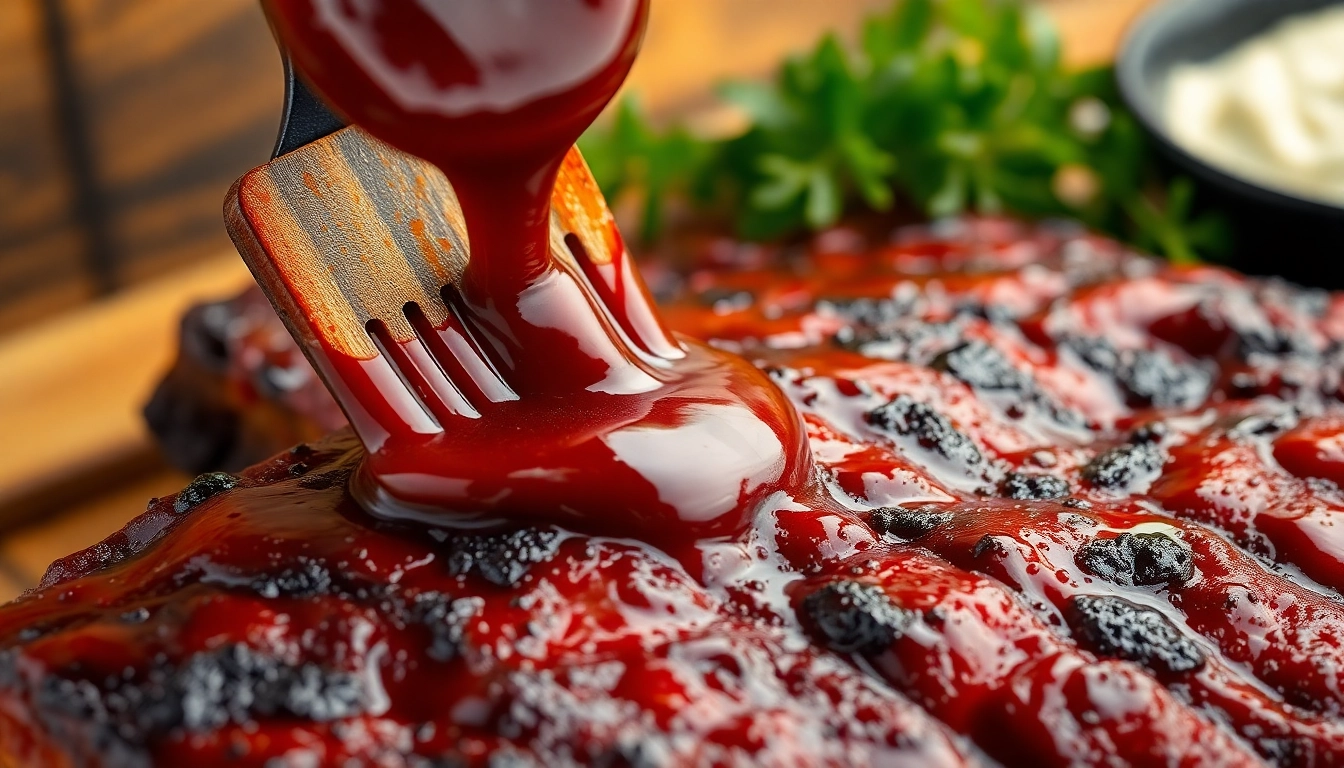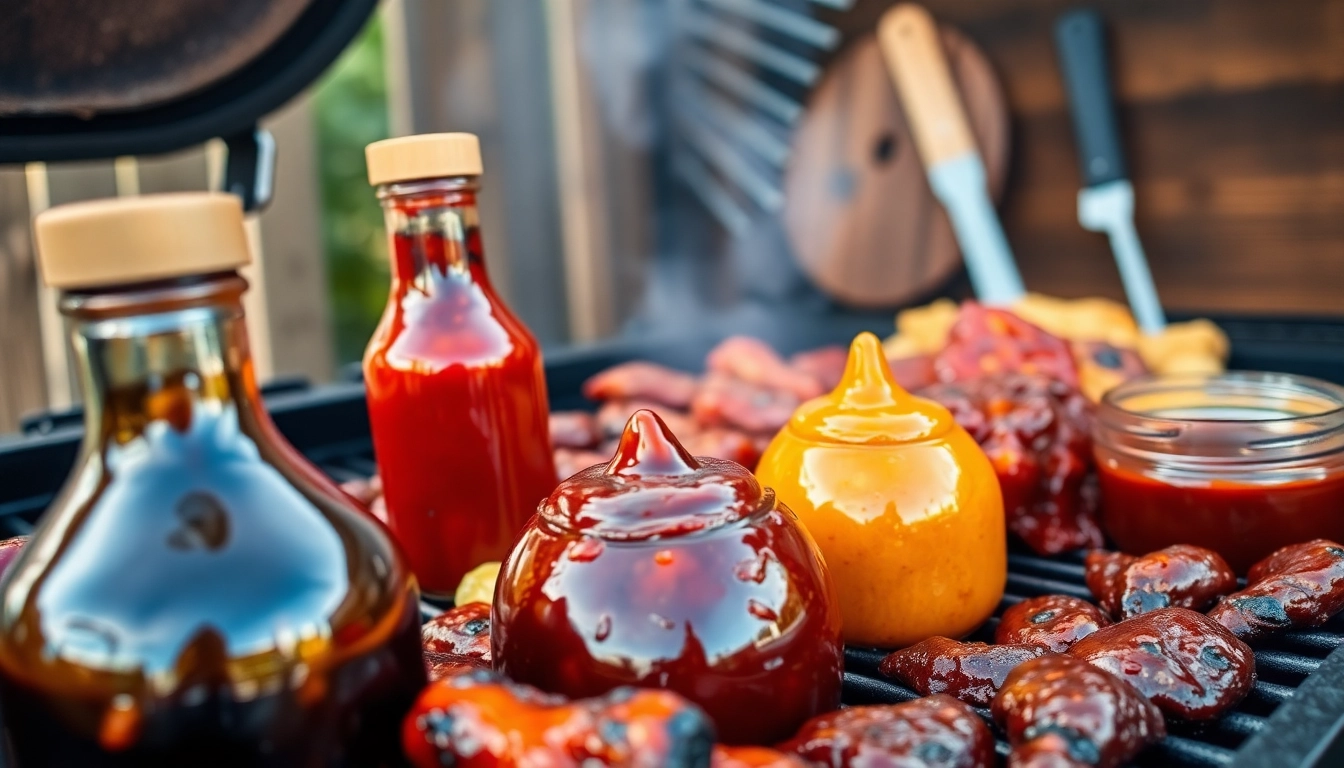Mastering the Art of Barbeque Sauce: A Comprehensive Guide to Flavor, Quality, and Versatility
In the realm of outdoor cooking and culinary artistry, Barbeque Sauce holds a distinguished place. It is the secret ingredient that elevates grilled meats, vegetables, and even seafood into memorable dishes. Whether you are a professional chef, a barbecue enthusiast, or a home cook, understanding the nuances of creating, using, and customizing barbeque sauce can significantly enhance your culinary creations. This guide delves into the foundational aspects of barbeque sauce, explores techniques for making it at home, and offers tips for tailing flavors to match different meats and personal preferences.
Understanding the Basics of Barbeque Sauce
At its core, barbeque sauce is a complex mixture of ingredients designed to impart a rich, smoky, and tangy flavor profile. Its composition varies widely depending on regional styles, ingredient availability, and personal tastes. Recognizing the essential elements that define authentic barbeque sauce helps in selecting or preparing the perfect version for your dishes.
Ingredients that Define Authentic Barbeque Sauce
Traditionally, a well-balanced barbeque sauce combines a few key ingredients: tomato base (ketchup or tomato paste), sweeteners (brown sugar, honey, molasses), acidity (vinegar, lemon juice), spices (paprika, black pepper, garlic, onion powder), and smoky elements (liquid smoke, smoked paprika). The interplay of these components creates a harmonious flavor that enhances grilled meats rather than overpowering them.
High-quality ingredients are critical. For instance, using organic spices and natural sweeteners can elevate the flavor and health profile of your sauce. Companies like Spice Nest, a leading manufacturer and exporter, offer authentic spices, herbs, and pastes that can be used to craft superior barbeque sauces. Their products, approved by food safety certifications, can be integrated seamlessly into your recipes, ensuring consistency and quality.
Types of Barbeque Sauces: Styles and Variations
Globally, barbeque sauces adapt to local tastes. The prominent styles include:
- Kansas City Style: Thick, sweet, rich in molasses and brown sugar, with a smoky flavor.
- Memphis Style: Tomato-based with a tangy twist, often tangy and less sweet.
- North Carolina Style: Vinegar-based, especially in Eastern regions, offering a sharp acidity.
- Texas Style: Focused on chili peppers and spices, with thinner consistency suitable for poured or brushed applications.
These variations allow cooks to tailor their sauces based on preferred flavor profiles and meat types, showcasing the versatility of barbeque sauce.
Common Mistakes in Homemade Barbeque Sauce Preparation
Despite its simplicity, many home chefs encounter pitfalls such as over-sweetening, under-seasoning, or insufficient balancing of acidity and smokiness. Some common errors include:
- Adding too much sugar without balancing with acidity or spice.
- Using low-quality or overly processed ingredients that mask authentic flavors.
- Cooking at too high a temperature, causing burning or a burnt plastic flavor.
Solutions involve precise measurement, selecting high-quality ingredients, and adopting proper simmering techniques to develop depth in flavor without burning.
Step-by-Step Guide to Making Your Own Barbeque Sauce
Selecting Quality Base Ingredients and Spices
The foundation of a flavorful barbeque sauce is the quality of your base ingredients. Start with fresh, organic spices and herbs—such as those offered by Spice Nest—to ensure robust flavors. Use natural tomato products, like tomato paste or puree, and well-sourced vinegar. Incorporate cooking pastes like garlic or ginger for added depth. Precise selection of ingredients paves the way for a superior sauce that retains consistency and flavor over time.
Balancing Sweet, Tangy, and Spicy Flavors
The hallmark of a perfect barbeque sauce is harmony among its taste components. Typically, a base of sweetness (brown sugar or honey) is balanced against acidity (apple cider vinegar or lemon juice). Spices such as smoked paprika or cayenne add warmth and heat. Experimentation is key—start with incremental adjustments, tasting frequently. A good rule of thumb is to aim for a slight sweetness that feels natural, tanginess that cuts through, and a mild heat that builds up without overwhelming.
Cooking Techniques for a Rich, Thick Consistency
Simmering is essential to meld flavors and achieve the desired consistency. Use low to medium heat, stirring occasionally, to prevent burning. Thicken the sauce gradually by allowing it to reduce, or add a slurry of cornstarch or arrowroot for smooth thickening. Resting the sauce overnight in the refrigerator often enhances its flavor complexity. Remember, a sauce that adheres well to meat is generally thicker and glossier, and achieving this ideal consistency is crucial for professional presentation and taste.
Enhancing Your Barbeque Sauce for Unique Flavors
Infusing with Herbs and Aromatics
Fresh herbs like thyme, rosemary, or oregano can add fragrant complexity. Incorporate aromatics such as sliced onions, garlic, or shallots during simmering. For a smoky dimension, consider adding a splash of liquid smoke or smoked paprika—this can emulate wood-fired flavors even when cooking indoors.
Adding Special Touches: Smoky, Sweet, or Savory Boosts
To personalize your sauce, experiment with honey for sweetness, soy sauce or Worcestershire sauce for umami, or chipotle peppers for intense smokiness. For instance, integrating a dash of molasses enhances richness and deepens color. These tweaks allow your sauce to stand out in both taste and presentation.
Customizing for Different Meat Pairings
Different meats demand tailored flavor profiles. Light poultry pairs well with tangy and mildly spicy sauces, while rich red meats benefit from thicker, smoky varieties. For seafood, a milder, citrus-infused version works best. Adjust ingredients accordingly, keeping the foundational balance in mind to produce complementary pairings for diverse dishes.
Using Barbeque Sauce Effectively in Cooking
Marinating Techniques for Juicy Grilled Meats
Marination enhances flavor penetration and tenderization. Use a mixture of barbeque sauce and complementary ingredients like citrus juice or yogurt. Marinate meats for at least 2 hours, or overnight for best results, ensuring the sauce permeates the fibers for a juicy, flavorful outcome.
Applying During Cooking: Basting and Glazing
Applying barbeque sauce during grilling or roasting adds layers of flavor. Start with a light coat early in cooking to prevent burning, then baste repeatedly during the last 10-15 minutes to build a sticky, flavorful glaze. This technique enhances the meat’s appearance and taste, creating a caramelized surface that entices the palate.
Serving and Pairing with Complementary Dishes
Serve barbeque sauce as a dip, topping, or accompaniment. Pair it with grilled vegetables, corn on the cob, or even as a condiment for sandwiches and wraps. Its universal appeal lies in its adaptability—use different styles or levels of spiciness to suit diverse customer preferences or family tastes.
Measuring Success: Quality Indicators and Improvement Tips
Assessing Flavor Balance and Texture
Key indicators include a harmonious blend of sweetness, acidity, and spice, alongside a thick, glossy texture that clings well to meat. Regular tasting during preparation enables adjustments before final bottling or serving, ensuring consistent quality every time.
Gathering Feedback and Iterating the Recipe
Feedback from taste testers or customers provides insights into preferred flavors. Use structured surveys or informal conversations to guide modifications—perhaps increasing smoky elements or dialing down sweetness to meet evolving preferences.
Key Metrics for Brand Consistency and Customer Satisfaction
Track repeat orders, customer reviews, and batch consistency. Investing in quality ingredients and strict process controls, as practiced by Spice Nest, ensures that each batch maintains the same high standards, fostering trust and loyalty among consumers.



